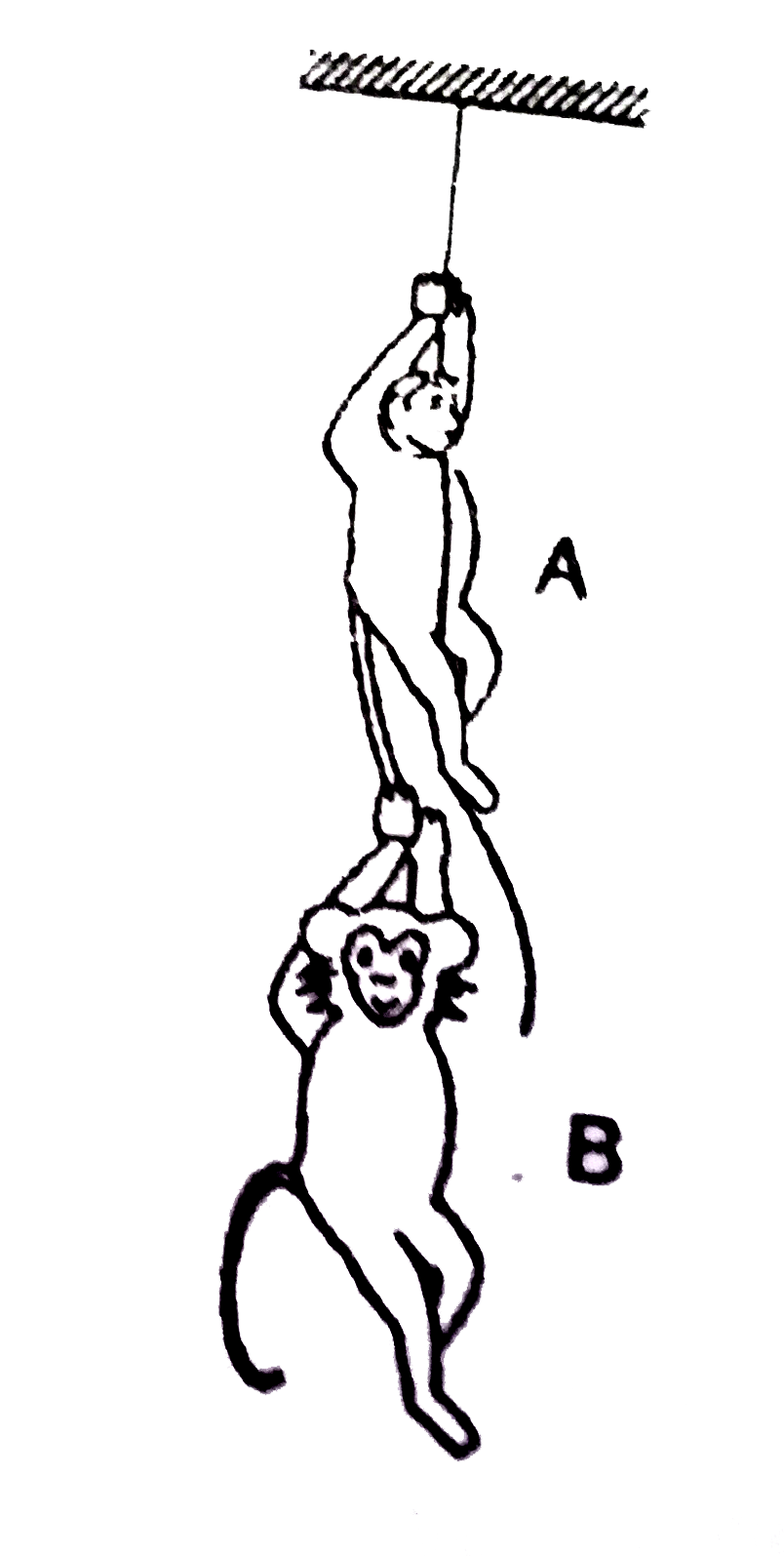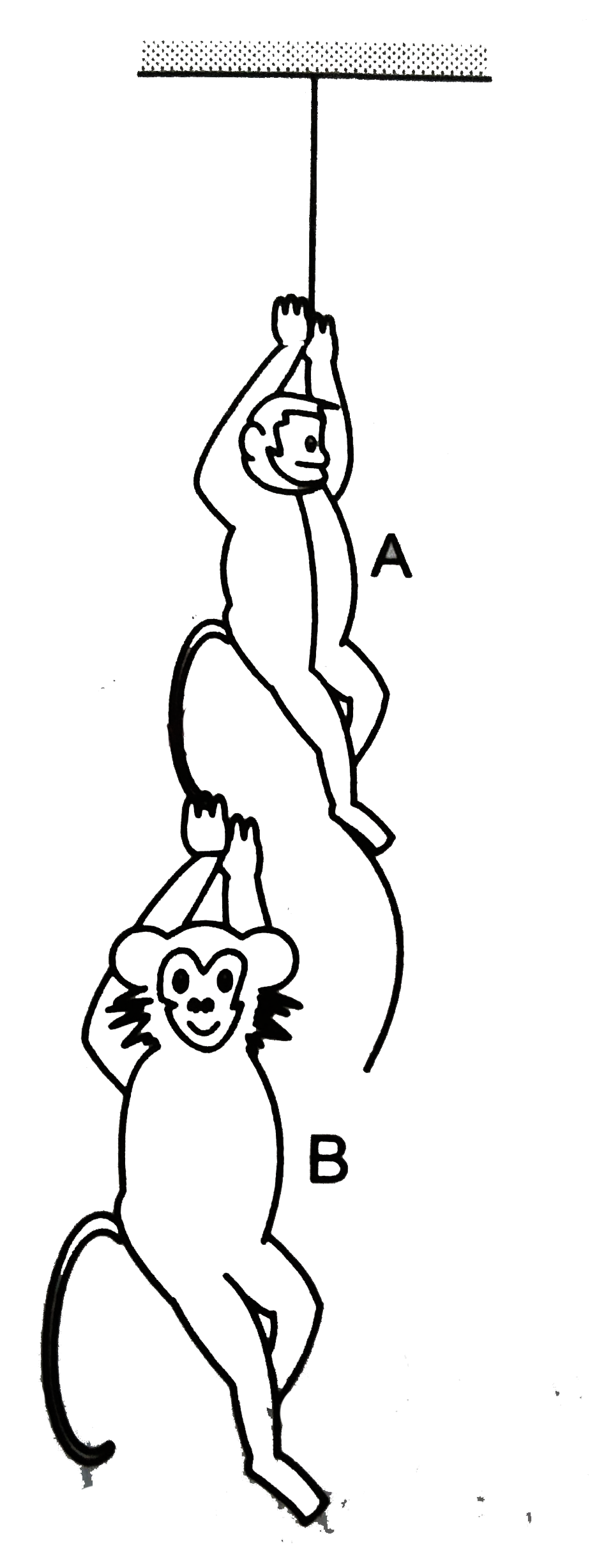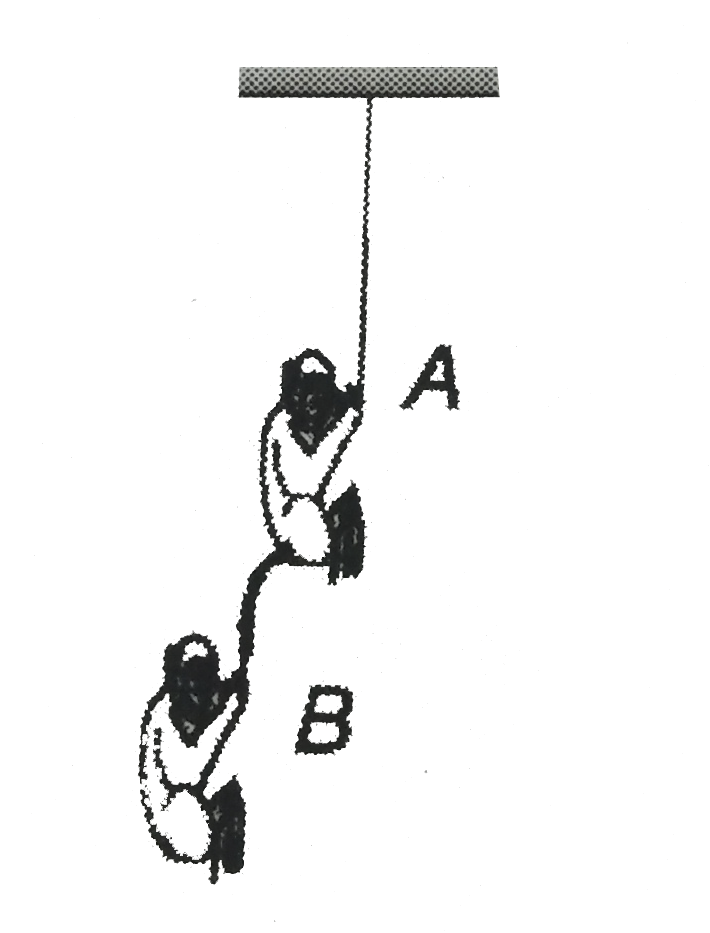A monkey A ( mass = 5kg) is climbing up a rope tied to a rigid support . The monkey B (mass=2kg ) is holding on to the tail of monkey A . If the tail can tolerate a moximum tension of 30N, what force should monkey A apply on the rope in order to carry monkey B with it ? (g=10m/s2)
The correct Answer is:between 70N and 105N
Similar Questions
The monkey B shown in fig. is holding on to the tall of the monkey A which is climbing up a rope. The masses of the monkeys A and B are 5 kg and 2kg respectively. If A can tolerate a tension of 30N in its tall, what force should it apply on the rope in order to carry the monkey B with it ?
(Take g=10ms−2)
 View Solution
View SolutionThe monkey B shown in fig. is holding on to the tall of the monkey A which is climbing up a rope. The masses of the monkeys A and B are 5 kg and 2kg respectively. If A can tolerate a tension of 30N in its tall, what force should it apply on the rope in order to carry the monkey B with it ?
(Take g=10ms−2)
 View Solution
View Solution
Knowledge Check
- Question 1 - Select One
A monkey of mass 20 kg climbs on a rope which can stand a maximum tension of 300 N. In which of the following case will the rope break . The monkey
AClimbs up with an acceleration of 6ms2BClimbs down with an acceleration of 4 ms2CClimbs up with a uniform speed of 5ms2DFalls down the rope nearly free under gravity - Question 2 - Select One
A monkey of mass 30 kg climbs a rope which can withstand a maximum tension of 360 N. The maximum acceleration which this rope can tolerate for the climbing of monkey is:
(g=10m/s2)A2m/s2B3m/s2C4m/s2D5m/s2 - Question 3 - Select One
A monkey of mass 40 kg climbs on a massless rope of breaking strength 600 N. The rope will break if the monkey. (Take g=10m/s2)
Aclimbs up with a uniform speed of 6m/sBclimbs up with an acceleration of 6m/s2Cclimbs down with an acceleration of 4m/s2Dclimbs down with a uniform speed of 5m/s
The monkey B shown in figure is holding on to the tail of the monkey A which is climbing up a rope. The masses of the monkeys A and B are 5 kg and 2kg respectively. If A can tolerate a tension of 30 N in its tail what force should it apply on the rope in order to carry the monkey B with it? Take g=10 ,m/s2.
 View Solution
View SolutionThe monkey B shown in figure is holding on to the tall of the monkey A which is climbing up a rope. The masses of the monkeys A and B are 5 kg and 2kg respectively. If A can tolerate a tension of 30 N in its tail what force should it apply on the rope in order to carry the monkey B with it? Take g=10,ms2.
 View Solution
View SolutionThe monkey B shown in the figure is holding on the tail of the monkey. A which is climbing up a rope. The masses of the monkeys A and B are 40kg and 20kg, respectively. If A can tolerate a tension of 300N in its fail, what force should it apply on the rope in order to carry the monkey B with it?
 View Solution
View SolutionA monkey of mass 20 kg climbs on a rope which can stand a maximum tension of 300 N. In which of the following case will the rope break . The monkey
View SolutionA monkey a mass 15 kg is climbing on a rope with one end fixed to the ceiling. If it whishes to go up with an acceleration of 1ms2, how much force should it apply to the rope? If the rope is 5 m long and the monkey starts from rest, how much time will it take to reach the ceiling?
View Solution

